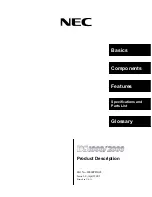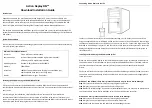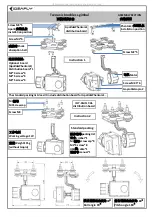
6.0 Connecting the Battery Cables
12
Xantrex Lithium-ion Battery Owner's Guide
6.0 Connecting the Battery
Cables
WARNING
FIRE HAZARD
Use only stranded, copper wire rated minimum 75 °C (105 °C for
marine installations). Make sure all DC connections to the
Rebling connector terminals (see
below) are tight to a
torque of 60±3 in-lb (or 6.7±0.35 N-m) of force. Loose
connections will overheat. Too much torque may crack the
Rebling connector terminals.
Failure to follow these instructions can result in death, serious
injury, or equipment damage
.
NOTICE
REVERSE POLARITY
n
Check cable polarity at the Xantrex Battery before making
the final DC connection. Positive must be connected to
positive; negative must be connected to negative.
n
Reversing the positive and negative battery cables will
blow a fuse in the Xantrex Battery and void your warranty.
Failure to follow these instructions can result in equipment
damage.
To secure the battery cable to the battery terminal using
the Rebling connector:
1. Make sure the battery is turned off. See
for instructions on how to operate the Power push
button.
n
Ensure all other DC sources have been powered off
and disconnected.
c
If a charging source is
present, operational, and connected to a common
bus with the battery, the battery unit will not power
down.
n
Disconnect the 12-pin Deutsch connector from the
battery.
2. Attach using a 5/16" (or 3/8") single hole lug, the negative
(-) battery cable to the negative (-) battery terminal of the
cable-mounted keyable plug. Review
for proper
routing including feeding the cables through the boot and
stacking the terminal hardware. Tighten the bolt to 60±3 in-
lb (or 6.7±0.35 N-m).
3. Install your DC-rated circuit protection device (
)
in line with the positive battery cables. The device MUST
be in open position.
IMPORTANT
: Postpone this step if you are planning a
parallel battery installation. See
4. Attach the protected positive (+) battery cable to the
positive (+) battery terminal of the cable-mounted keyable
plug. Review
for proper routing including feeding
the cables through the boot and stacking the terminal
hardware. Tighten the bolt to 60±3 in-lb (or 6.7±0.35 N-m).
5. Reassemble the cable-mounted keyable plug by
encapsulating the key assembly with the top and boot.
6. Remove the red screw tip cover from the key screw.
7. Align the connector to its mate on the battery and turn the
key lever clockwise to fasten the connection until the lever
stops. Do not apply excessive force.
IMPORTANT
: Postpone this step if you are planning a
parallel battery installation. See
.
Figure 8 Cable-mounted keyable plug
A
B
TIP
: Separate the top (A) from the boot (B) as shown to expose the
key assembly which contains the battery terminals.
NOTE
: The cable-mounted keyable plug doubles as a protective
boot that securely attaches the battery cables as an assembly to
the battery terminals.
Figure 9 Rebling Assembly
C
D
E
A
F
B
A
battery cable
B
terminal bolt
C
lock washer
D
cable ring lug
E
Rebling connector terminal
F
DC-rated circuit protection device e.g. battery breaker













































